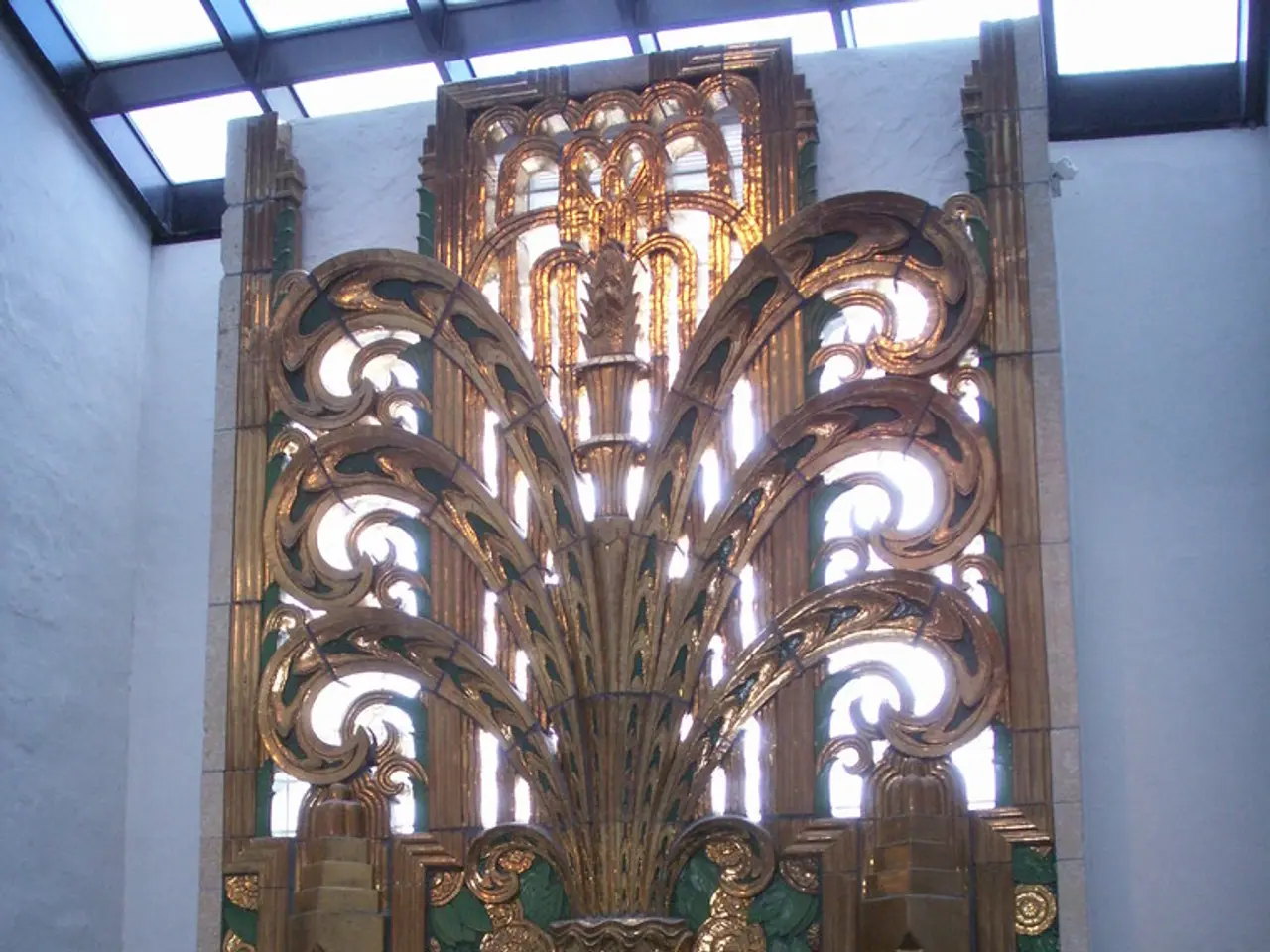Ancient Shade of Green, 'Celadon', Gaining Popularity in 2025 - Exploring the Unexplained Interest in This Historic Hue
**Celadon: A Timeless and Trendy Green Hue in Modern Design**
Celadon, a color deeply rooted in history, is making a comeback in contemporary design. Originating from a type of pottery glaze first developed in China around 1600 BC, this unique green-gray finish has been highly prized and widely imitated in Korea and Japan.
The name "Celadon" is derived from a European source, possibly from the character Celadon in the 1627 French pastoral novel *L'Astrée*, who wore a pale green color. The celadon glaze is created through a complex chemical process involving iron oxide, which changes during firing to produce the subtle variations in hue.
In terms of characteristics, celadon today is described not as a muted or flat green but as a delicate porcelain-like color with warmth and luminosity. It distinguishes itself from other greens such as sage or mint by offering more energy and subtle complexity. Modern descriptions of celadon note that it is created from a simple mix of yellow ochre, Prussian blue, and a touch of black, resulting in a color that is both soft and vibrant.
The resurgence of celadon in modern design can be attributed to its elegant and versatile nature. Its sophisticated blend of blue-green tones and subtle sheen make it ideal for spaces and products that seek a balance of tradition and modern freshness. Celadon can be found in various forms, from leather and textiles to paints, and it is appreciated for its calming yet dynamic presence.
This summer, reactive glazes are recommended for embracing the celadon color trend in serveware. For instance, the four piece plate set from the Conran Shop gives a sense of the warmth of celadon, while the enamel stool design exhibits a subtle variation of the color.
Edward Bulmer, a British interior designer and architectural historian, has created a paint shade named after the color Celadon. Edward Bulmer's Celadon paint shade is described as a delicate and pretty porcelain color with enough warmth to avoid any hints of mint. Mylands offers a paint color named after Celadon, featuring a warmer, richer shade than some others.
Celadon can be paired with a harmonious palette including colors like pistachio, Fair White, Aquatic, Drab Green, Mummy, and lacquer red. Habitat describes a slightly cooler shade as pistachio, but it still resembles Celadon. Celadon's versatility allows it to work beautifully in various rooms, such as bedrooms, bathrooms, and sitting rooms.
Despite being vibrant, celadon also has a neutral quality, making it a potential new go-to color for those wary of 'millennial green' or light blue walls trends. The translucent glass of the H&M bowl gives it the brightness and lightness of celadon, while this jug features a slightly warmer take on the color, highlighting its brighter spots.
In conclusion, celadon bridges millennia of cultural heritage and today’s design aesthetics, making it a timeless and currently trendy color choice in modern creative fields. Its unique history, versatile nature, and adaptability to various design contexts make it an ideal choice for those seeking a balance of tradition and modern freshness.
| Aspect | Details | |-------------------|------------------------------------------------------------------------------------------------| | **Origin** | Chinese pottery glaze dating back to ~1600 BC, later adopted by Korea and Japan | | **Name Origin** | Possibly from a French novel character, Celadon, wearing pale green | | **Chemical basis**| Iron oxide transformation during firing creates the green-gray tone with variations | | **Visual Traits** | Pale, grayish-green with luminosity and subtle shifts in tone depending on light | | **Modern Use** | Popular in contemporary design for leather, paints, textiles; appreciated for sophistication and warmth | | **Trend Reason** | Combines historical depth with fresh, elegant energy; adaptable to various design contexts |
- The unique green-gray finish, known as celadon, is making a comeback in contemporary design, offering a balance of tradition and modern freshness.
- This 'trendy' color can be found in various forms, from furniture and textiles to paints, showcasing its versatility and adaptability.
- In the realm of 'interior design', celadon can harmoniously coexist with colors like pistachio, Fair White, Aquatic, Drab Green, Mummy, and lacquer red.
- For those who want to embrace the celadon color trend in their kitchen or home-and-garden, reactive glazes are recommended for serveware.
- To enhance the warm yet vibrant presence of celadon, art and decor pieces, such as the four-piece plate set from the Conran Shop or Edward Bulmer's Celadon paint shade, can be used.
- The timeless and currently trendy color choice, celadon, bridges millennia of cultural heritage and today's design aesthetics, making it an ideal option for those seeking a blend of tradition and modern lifestyle.




